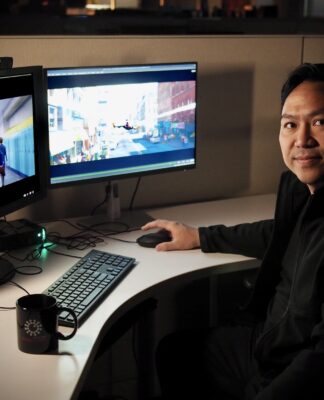IMPORTANT and relevant visual aids should not be removed from classrooms, UST high school principals said in response to the Department of Education’s directive prohibiting “unnecessary” posters and wall decorations.
According to Assoc. Prof. Marielyn Quintana, principal of the UST Education High School (EHS), teachers and school administrators should not interpret the DepEd order literally and instead prioritize the removal of stockpiled materials and unnecessary decorations.
“I go for the cleanliness and orderliness. It is necessary to have a conducive environment,” she told the Varsitarian. “But at the same time, I also believe that visual aids related to lessons…are important decorations and displays, which I believe should not be removed.”
The DepEd, in an order dated Aug. 3, instructed schools to keep facilities “free from unnecessary artwork, decorations, tarpaulin, and posters.”
“Classroom walls shall remain bare and devoid of posters, decorations or other posted materials. Classrooms should not be used to stockpile materials and should be clear of other unused items or items for disposal,” the order read.
But some visual aids are important in the teaching-learning process, Quintana said.
“[S]ome decorations also serve as instruction materials and they are also used by teachers to supplement their lessons,” she said. “So I think they should not be removed, most especially in basic education, specifically in the grade school.”
Assoc. Prof. Marishirl Tropicales, principal of UST Junior High School (JHS), shared similar sentiments.
“[R]elevant but minimal posters or decorations carefully and strategically placed in the classrooms may also aid students to develop positive values, to enhance their creativity, to support emotional and behavioral regulations of students, and even to give way for freedom of expression,” she told the Varsitarian.
“I stand firm for still maintaining minimal and relevant materials posted inside the classrooms to provide students with visual prompts that will guide them in their thought processes and actions,” she added.
In JHS classrooms, there are bulletin boards with useful information located at the back of classrooms. Similarly, in the EHS, bulletin boards serve as platforms for disseminating announcements, instructional plans and other materials.
Environment is the ‘third teacher’
In an Aug. 17 Facebook post, Vice President and DepEd Secretary Sara Duterte reiterated her order to public school teachers and administrators to remove all wall decorations in classrooms.
“Pinaalahanan ko rin ang ating mga guro tungkol sa DepEd Order no. 21, series of 2023 o ang Brigada Eskwela Implementing Guidelines na tiyaking malinis at walang mga dekorasyon, tarpaulin o mga posters ang mga silid-aralan upang magkaroon ng focus ang ating mga mag-aaral sa mga leksyon mula sa ating mga guro,” she said.
(I reminded our teachers of DepEd Order no. 21, series of 2023, or the Brigada Eskwela Implementing Guidelines, which state that they should ensure that classrooms are free of decorations, tarpaulins, or posters so students can focus on their lessons.)
Asst. Prof. Eleanor Bahrami-Hessari of the UST Department of Elementary Education said taking down posters from classroom walls might impede students’ ability to concentrate during lessons.
She pointed out that the DepEd directive contradicted the principles of child development, which emphasize the learner’s environment as being akin to the “third teacher.”
“Without having those materials, educational materials in the environment, it inhibits the students from actually learning and being able to focus, contradictory to what they said about the reason for doing that,” she said.
“[I]t will really make this a struggle in focusing because they don’t have that visual cue that they need…those visual materials are actually a guide for students as they’re learning,” she added.
Eric Portera, who serves as the Araling Panlipunan and Mapeh coordinator at the JHS, said visual aids play a crucial role in supporting the learning of students, particularly those in the foundational stages of education.
“They are still much needed especially by visual learners and elementary students…There were studies that discussed the importance of these visual aids because they really help the learners,” Portera told the Varsitarian.
Bahrami-Hessari said teachers must be given more leeway in handling their classes given their professional training.
“[T]eachers should not be micromanaged in terms of that aspect because we have to trust our teachers. We have to trust our educators, that we have studied this for years and we know what we are doing,” she said. Mabel Anne B. Cardinez with reports from Hannah Joyce V. Andaya

















